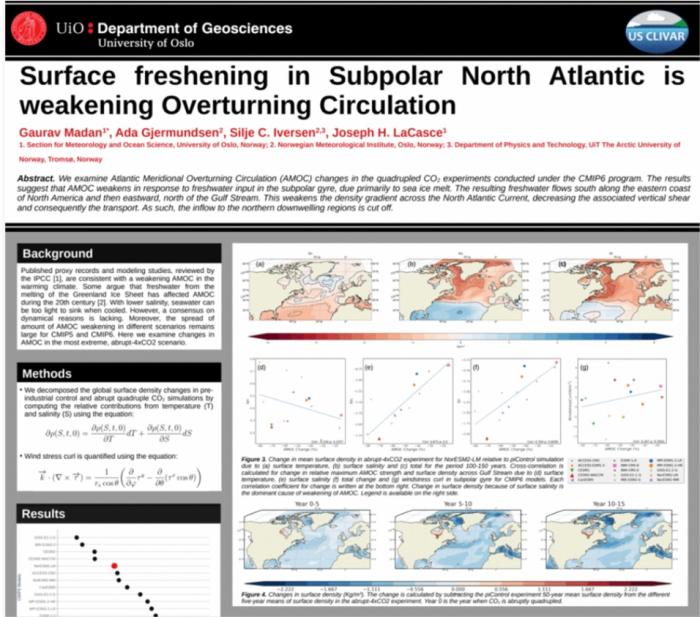ARCUS Community Member Profiles highlight our individual members and member representatives. They are short, easy-to-read profiles to help the ARCUS community get to know one another and support connections across disciplines and perspectives. This article summarizes the featured Profile of Gaurav Madan, Doctoral Research Fellow at the University of Oslo. For more information, please download the attached Member Profile and the transcript of a related interview.

What do you study?
I quantify the complex physical processes of large-scale ocean circulation in climate models. The polar ocean and subpolar North Atlantic are my key areas of interest. Using computer models, my project explores what may happen to ocean currents under different CO2 emissions scenarios and tries to quantify the relative importance of different physical ocean characteristics such as surface temperature, temperature and salinity gradients, and wind stress.
What fascinates you about this work?
I am a computer science graduate and worked for two years as a programmer in India. But secretly, I wanted to chase tornadoes in Oklahoma. So I started a master’s program in atmospheric science. In the first semester, it dawned upon me that the Arctic is probably the most exciting region to study for how rapidly it is changing, and the sea ice may vanish in my lifetime. Tornadoes could wait! Fast forward to today—the fact that I am using the programming skills, which I never found exciting during my undergrad school, to study the Arctic and beyond with the help of state-of-art climate models, keeps me excited about every aspect of the work I do.
What else would you like to work on?
I am actively looking for collaborations to study air-ice-sea interaction in the marginal ice zones and opportunities to test our findings in real-world scenarios.
I also have a flair for storytelling and, after performing internationally over the past five years, I am developing plans to design a science communication workshop for Early Career Researchers. I’d be interested in working with others on this project who can help demonstrate how to make science more accessible through the use of audio-visuals.

When you aren't doing Arctic research, where might we find you?
When I'm not in the office, I like to run in the mountains and frozen lands, tell stories, and click photos. I try to run 3–4 ultramarathons yearly and the dream of running the Iditarod Trail Invitational 1,000-mile race in Alaska is part of what got me interested in the Arctic. Besides that, I’m a member of the Board of Directors for the Indian Youth Climate Network, a civil society organization in India aimed at mobilizing youth to take action to address various aspects of climate change.
Connect with Gaurav Madan
Websites: https://egonomics.blog
https://www.mn.uio.no/geo/english/people/aca/metos/gauravm
Twitter: @26_2miles

